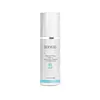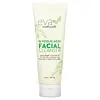What's inside
What's inside
 Key Ingredients
Key Ingredients

 Benefits
Benefits

 Concerns
Concerns

 Ingredients Side-by-side
Ingredients Side-by-side

Water
Skin ConditioningPolysorbate 20
EmulsifyingGlycerin
HumectantSodium Methyl Cocoyl Taurate
CleansingCoco-Betaine
CleansingSodium PCA
HumectantCitrus Tangerina Peel Oil
MaskingGlycolic Acid
BufferingPolysorbate 80
EmulsifyingPhospholipids
Skin ConditioningSantalum Album Extract
CleansingPhellodendron Amurense Bark Extract
Skin ConditioningSodium Hyaluronate
HumectantHordeum Vulgare Extract
EmollientPEG-7 Glyceryl Cocoate
EmulsifyingAlcohol
AntimicrobialEthylhexylglycerin
Skin ConditioningMethylpropanediol
SolventCaprylhydroxamic Acid
Water, Polysorbate 20, Glycerin, Sodium Methyl Cocoyl Taurate, Coco-Betaine, Sodium PCA, Citrus Tangerina Peel Oil, Glycolic Acid, Polysorbate 80, Phospholipids, Santalum Album Extract, Phellodendron Amurense Bark Extract, Sodium Hyaluronate, Hordeum Vulgare Extract, PEG-7 Glyceryl Cocoate, Alcohol, Ethylhexylglycerin, Methylpropanediol, Caprylhydroxamic Acid
Water
Skin ConditioningAloe Barbadensis Leaf Juice
Skin ConditioningDimethyl Sulfone
SolventJojoba Esters
EmollientDecyl Glucoside
CleansingCocamidopropyl Betaine
CleansingCocamidopropyl Hydroxysultaine
CleansingPhenoxyethanol
PreservativeCocamide Mipa
EmulsifyingCarrageenan
Cucumis Sativus Extract
Skin ConditioningDisodium Laureth Sulfosuccinate
CleansingDisodium Lauryl Sulfosuccinate
CleansingAcrylates/C10-30 Alkyl Acrylate Crosspolymer
Emulsion StabilisingLavandula Angustifolia Water
MaskingSodium Hydroxide
BufferingGanoderma Lucidum Extract
Skin ProtectingEthylhexylglycerin
Skin ConditioningGlycolic Acid
BufferingArctium Lappa Root Extract
Skin ConditioningCalendula Officinalis Extract
Skin ConditioningCitrus Grandis Seed Extract
AstringentRosmarinus Officinalis Extract
AntimicrobialSalix Alba Bark Extract
AstringentSimmondsia Chinensis Seed Oil
EmollientTrifolium Pratense Leaf Extract
AntioxidantOlea Europaea Fruit Oil
MaskingPotassium Sorbate
PreservativeSodium Benzoate
MaskingAlcohol
AntimicrobialCentella Asiatica Extract
CleansingEquisetum Arvense Extract
AstringentGeranium Maculatum Extract
TonicTaraxacum Officinale Extract
Skin ConditioningBorago Officinalis Seed Oil
EmollientRosa Canina Fruit Oil
EmollientCitrus Aurantium Dulcis Peel Extract
Emulsion StabilisingOriganum Vulgare Extract
Skin ConditioningTocopheryl Acetate
AntioxidantWater, Aloe Barbadensis Leaf Juice, Dimethyl Sulfone, Jojoba Esters, Decyl Glucoside, Cocamidopropyl Betaine, Cocamidopropyl Hydroxysultaine, Phenoxyethanol, Cocamide Mipa, Carrageenan, Cucumis Sativus Extract, Disodium Laureth Sulfosuccinate, Disodium Lauryl Sulfosuccinate, Acrylates/C10-30 Alkyl Acrylate Crosspolymer, Lavandula Angustifolia Water, Sodium Hydroxide, Ganoderma Lucidum Extract, Ethylhexylglycerin, Glycolic Acid, Arctium Lappa Root Extract, Calendula Officinalis Extract, Citrus Grandis Seed Extract, Rosmarinus Officinalis Extract, Salix Alba Bark Extract, Simmondsia Chinensis Seed Oil, Trifolium Pratense Leaf Extract, Olea Europaea Fruit Oil, Potassium Sorbate, Sodium Benzoate, Alcohol, Centella Asiatica Extract, Equisetum Arvense Extract, Geranium Maculatum Extract, Taraxacum Officinale Extract, Borago Officinalis Seed Oil, Rosa Canina Fruit Oil, Citrus Aurantium Dulcis Peel Extract, Origanum Vulgare Extract, Tocopheryl Acetate
Ingredients Explained
These ingredients are found in both products.
Ingredients higher up in an ingredient list are typically present in a larger amount.
Alcohol comes in many different forms. Different types of alcohol will have different effects on skin. This ingredient is usually an astringent alcohol.
These alcohols are drying on the skin. They may strip away your skin's natural oils and even damage your skin barrier. Astringent alcohols may also irritate skin.
Other types of astringent alcohols include:
According to the National Rosacea Society based in the US, you should be mindful of products with these alcohols in the top half of ingredients.
Any type of sanitizing product will have high amounts of alcohol to help kill bacteria and viruses.
Fatty alcohols come from plant oils such as coconut oil. These can help hydrate the skin and are non-irritating. Some fatty alcohols include cetyl and stearyl alcohol.
Learn more about AlcoholEthylhexylglycerin (we can't pronounce this either) is commonly used as a preservative and skin softener. It is derived from glyceryl.
You might see Ethylhexylglycerin often paired with other preservatives such as phenoxyethanol. Ethylhexylglycerin has been found to increase the effectiveness of these other preservatives.
Glycolic Acid is arguably the most famous alpha hydroxy acid (AHA) with tons of research backing its benefits.
It is found naturally in sugar cane but the form used in skincare is usually synthetic for purity and stability.
Glycolic acid removes the top layer of dead skin cells to allow newer and fresher ones to emerge.
AHAs work by breaking down the structural “glue” that holds old skin cells in place. When that buildup is gone, your skin can renew itself more efficiently.
Research also shows glycolic acid stimulates collagen production, helping to firm and thicken the skin over time. This is one of its biggest advantages over other AHAs.
Overall, glycolic acid helps with:
Fun fact: Glycolic acid boosts skin hydration by helping it produce molecules that increase hyaluronic acid naturally.
To work best, glycolic acid products should have a pH between 3-4 (that’s where exfoliation is most effective but still gentle on skin).
The pH and concentration of a product are key to its effectiveness:
It is normal to feel a slight stinging sensation when using glycolic acid. This usually fades as your skin adjusts.
Because glycolic acid has the smallest molecular size in the AHA family, it can penetrate deeper, which enhances its effectiveness but also makes it more likely to irritate sensitive skin.
If your skin is very sensitive or prone to rosacea, glycolic acid may be too strong; in that case, try milder options like lactic acid or a PHA instead.
Recent studies suggest glycolic acid might even help protect against UV damage. But don’t skip sunscreen! Freshly exfoliated skin is more sensitive to the sun.
Glycolic acid is a skincare superstar. It smooths, brightens, hydrates, and firms the skin. Unless you’re highly sensitive, it’s well worth adding to your routine.
Read more about some other popular AHA's here:
Learn more about Glycolic AcidWater. It's the most common cosmetic ingredient of all. You'll usually see it at the top of ingredient lists, meaning that it makes up the largest part of the product.
So why is it so popular? Water most often acts as a solvent - this means that it helps dissolve other ingredients into the formulation.
You'll also recognize water as that liquid we all need to stay alive. If you see this, drink a glass of water. Stay hydrated!
Learn more about Water